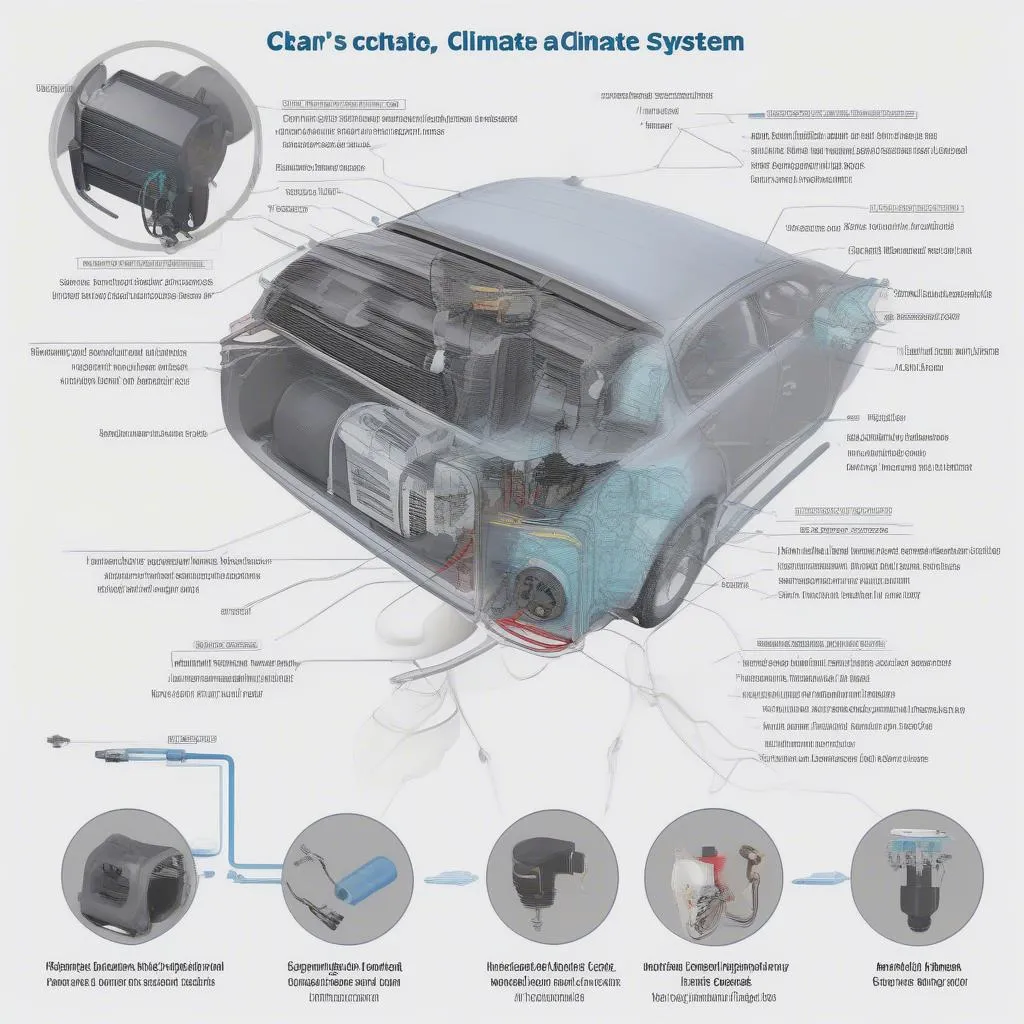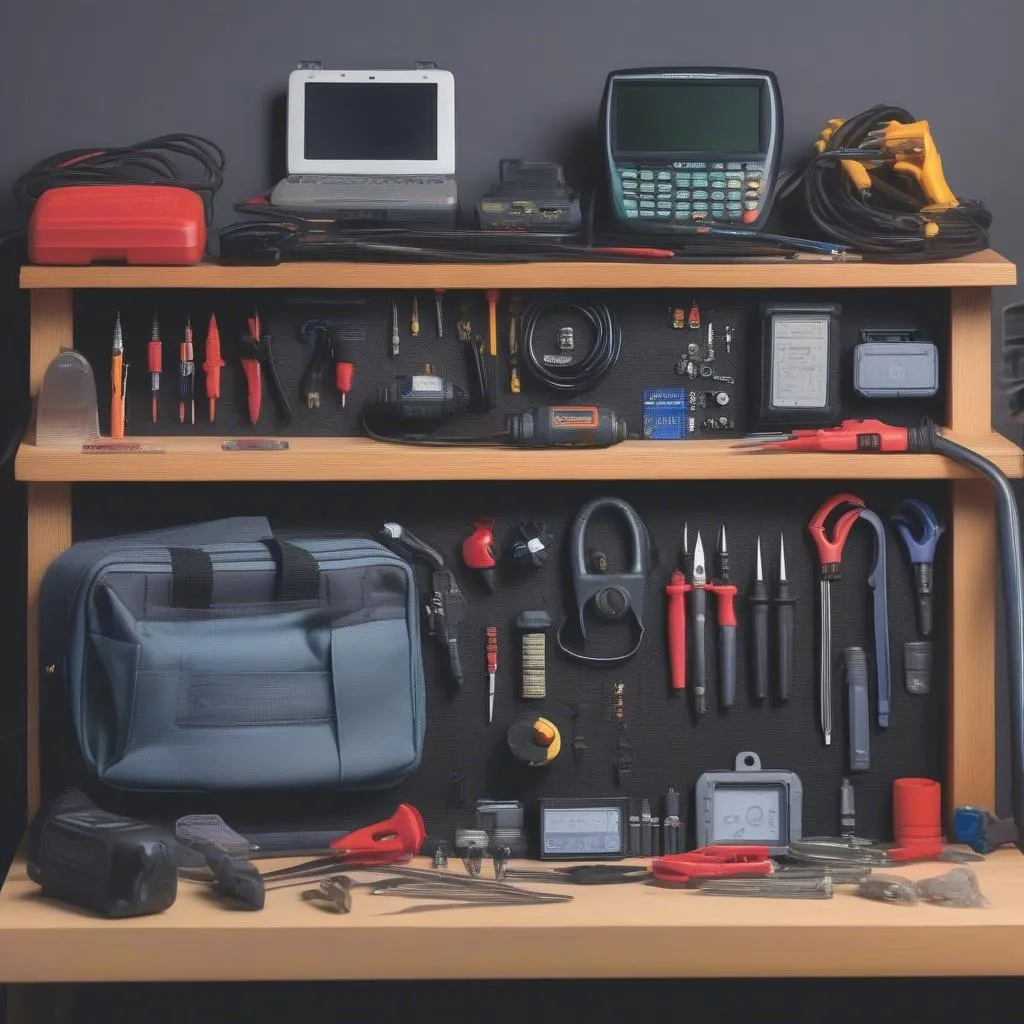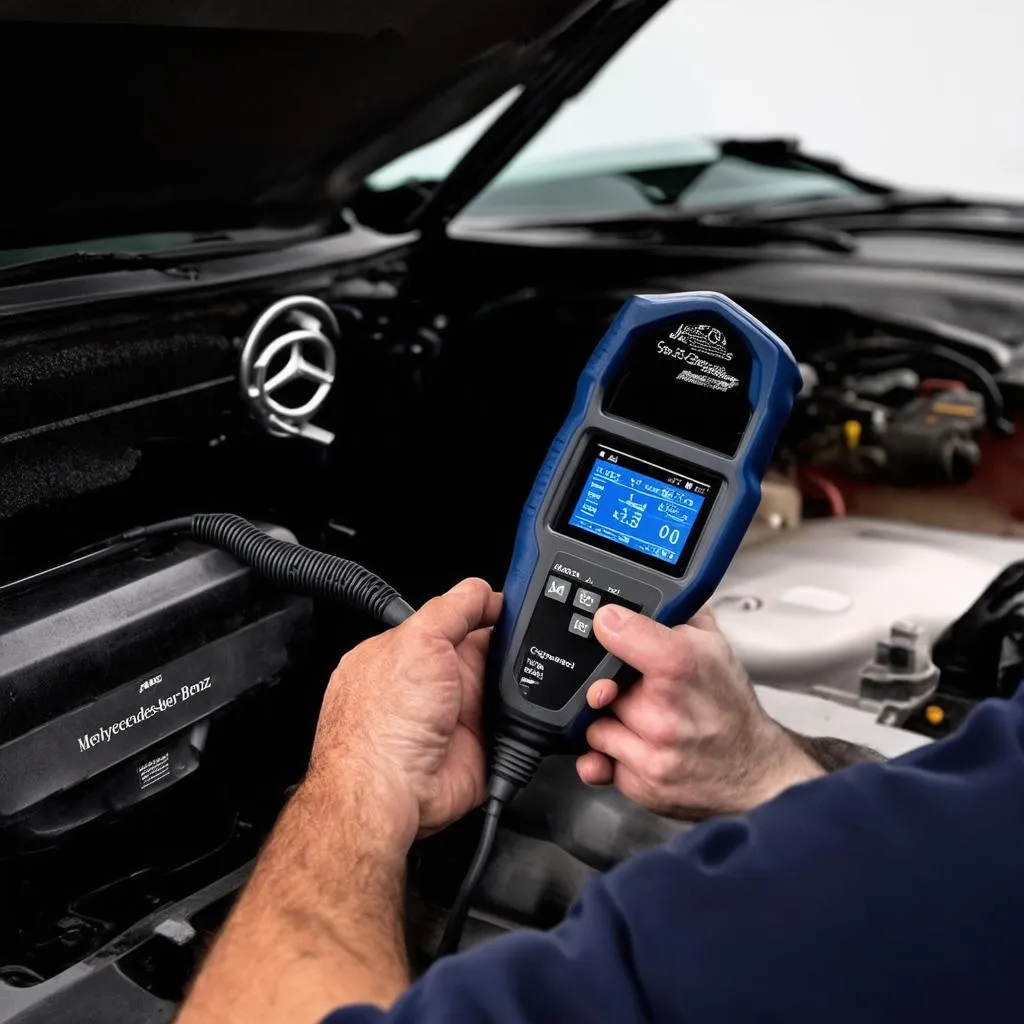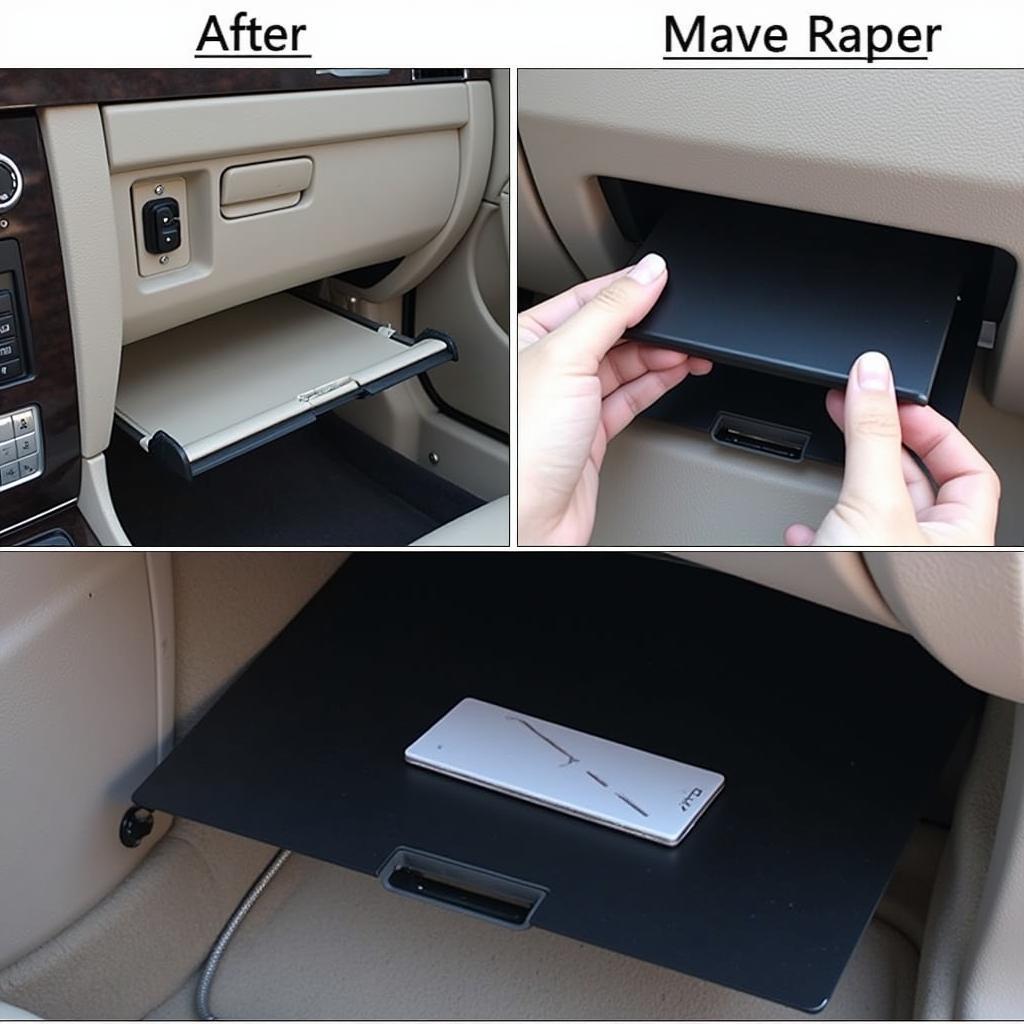Is your Mercedes CL500 (2006) refusing to blow cold air or stuck on one setting? You’re not alone. Climate control issues are a common complaint among CL500 owners. This guide will delve into the common culprits behind these problems and provide you with a step-by-step approach to diagnose and potentially fix the issue yourself.
Understanding the Problem: Why is My Climate Control Malfunctioning?
Several components work in unison to keep your CL500’s cabin at your desired temperature. A malfunction in any of these can lead to climate control issues. Here are some common culprits:
- Faulty Blower Motor Resistor: This component regulates the fan speed. If it fails, you might experience limited or no air flow.
- Malfunctioning Actuators: Actuators control the blend doors that direct airflow (e.g., to the defrost, face vents, or feet). A faulty actuator can lead to air blowing from the wrong vents or inconsistent temperatures.
- Refrigerant Leak: A leak in the AC system can prevent your car from cooling properly.
- Electrical Issues: Problems with wiring, fuses, or the climate control module itself can also disrupt the system.
- Sensor Malfunctions: Sensors in the system monitor cabin and outside temperatures. Inaccurate readings can confuse the system and lead to improper climate control.
 Mercedes CL500 Climate Control Components
Mercedes CL500 Climate Control Components
Identifying the Culprit: Recognizing the Signs
Before you start any repairs, it’s important to identify the specific issue. Here are some common symptoms and what they might indicate:
- No Airflow: This could point to a blown fuse, a faulty blower motor, or a problem with the blower motor resistor.
- Weak Airflow: A weak airflow could also indicate a failing blower motor resistor or a clogged cabin air filter.
- Air Blowing From the Wrong Vents: This is usually a sign of a faulty actuator or a problem with the blend door itself.
- Inconsistent Temperatures: Inconsistent temperatures can be caused by a refrigerant leak, a faulty sensor, or a problem with the climate control module.
Tools of the Trade: What You’ll Need
To diagnose and fix your CL500’s climate control, gather these tools:
- OBD-II Scanner: This tool reads your car’s error codes, which can pinpoint the problem area. Consider professional-grade options like those offered by Cardiagtech for in-depth diagnostics.
- Multimeter: Use this to test electrical components like fuses and sensors.
- Screwdriver Set: Essential for removing interior panels and accessing components.
- Socket Set: Helpful for dealing with bolts and fasteners.
- Refrigerant (if necessary): If you suspect a leak, you’ll need to recharge the system with the proper refrigerant. Consult your owner’s manual or a mechanic to determine the correct type.
 Car Climate Control Repair Tools
Car Climate Control Repair Tools
Fixing the Issue: A Step-by-Step Approach
While the exact repair steps vary depending on the problem, here’s a general guide:
- Scan for Error Codes: Begin by connecting your OBD-II scanner to your CL500’s diagnostic port, typically located under the dashboard. Scan for any stored codes related to the climate control system. These codes provide valuable clues about the source of the problem.
- Check the Basics: Before diving into complex repairs, inspect the easy stuff:
- Fuses: Locate your CL500’s fuse box (consult your owner’s manual) and check the fuses related to the climate control system.
- Cabin Air Filter: A clogged cabin air filter can restrict airflow. Replace it if necessary.
- Inspect the Blower Motor and Resistor: If you suspect the blower motor or resistor, access them under the dashboard (typically on the passenger side). Test the blower motor’s functionality by applying direct power. Use a multimeter to check the resistor for continuity.
- Investigate Actuators: If air blows from the wrong vents, you likely have a faulty actuator. Locate the actuator controlling the problematic vent and test its functionality. Replacement often involves removing the relevant dashboard trim for access.
- Consider Refrigerant Levels: If your AC isn’t blowing cold, use a gauge set to check the refrigerant pressure. Low pressure can indicate a leak.
- Seek Professional Help: If you’re uncomfortable tackling complex repairs or if the issue persists, consult a qualified mechanic specializing in Mercedes-Benz vehicles.
Frequently Asked Questions
Q: My CL500’s air conditioning works intermittently. What could be the problem?
A: Intermittent issues can be tricky. Possible culprits include a loose wire, a failing blower motor resistor, or a faulty sensor.
Q: Can I use any OBD-II scanner for diagnostics?
A: While basic scanners can read codes, investing in a more advanced scanner, potentially one from CARDIAGTECH, can provide more detailed information specific to Mercedes-Benz systems, making diagnostics more accurate.
Q: I recharged my AC system, but it’s not blowing cold air. What now?
A: If recharging doesn’t solve the problem, you likely have a leak in the system. A professional mechanic can use a leak detector to pinpoint and repair the leak.
Conclusion
Dealing with climate control problems in your Mercedes CL500 (2006) can be frustrating, but by understanding the common causes and following this guide, you can effectively diagnose and potentially resolve the issue. Remember, while DIY repairs can be satisfying, don’t hesitate to seek professional help from a qualified mechanic when needed, especially for complex tasks or if the problem persists. A comfortable drive is just around the corner!


